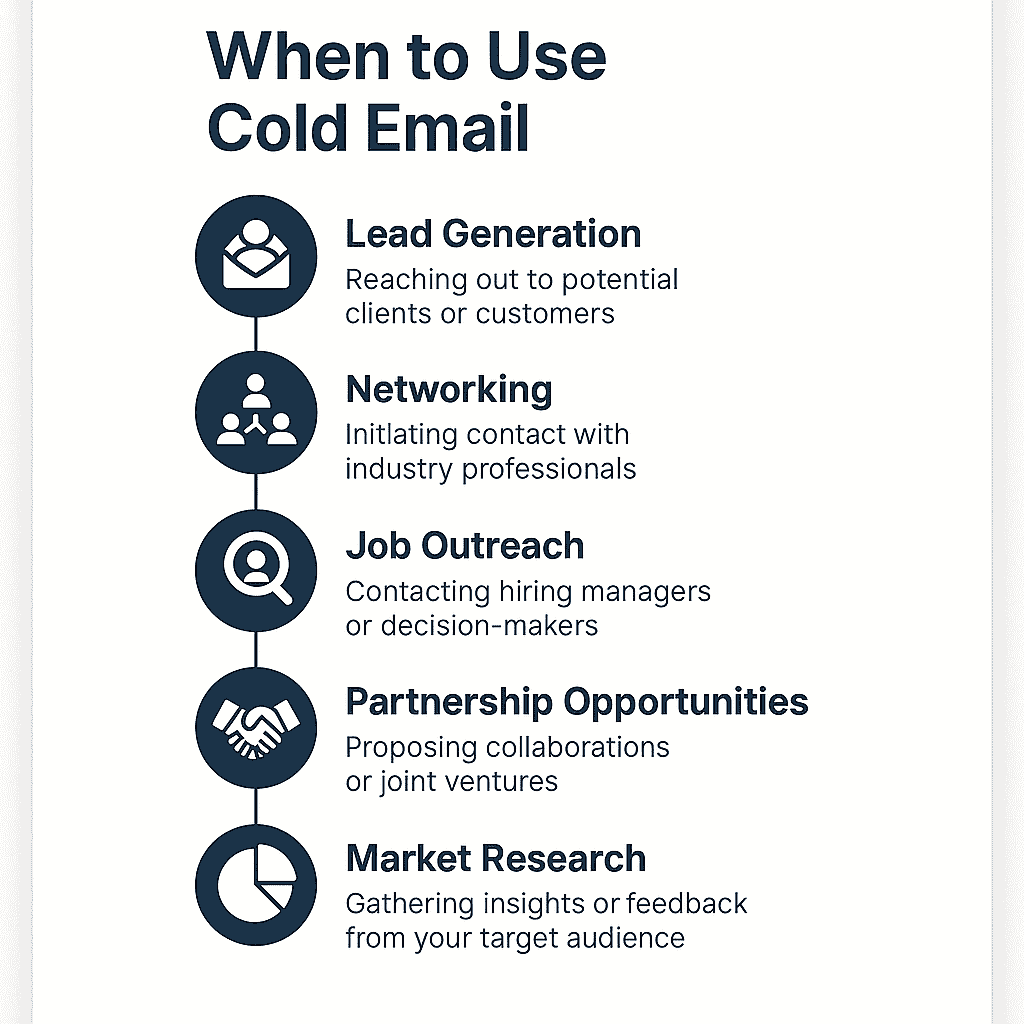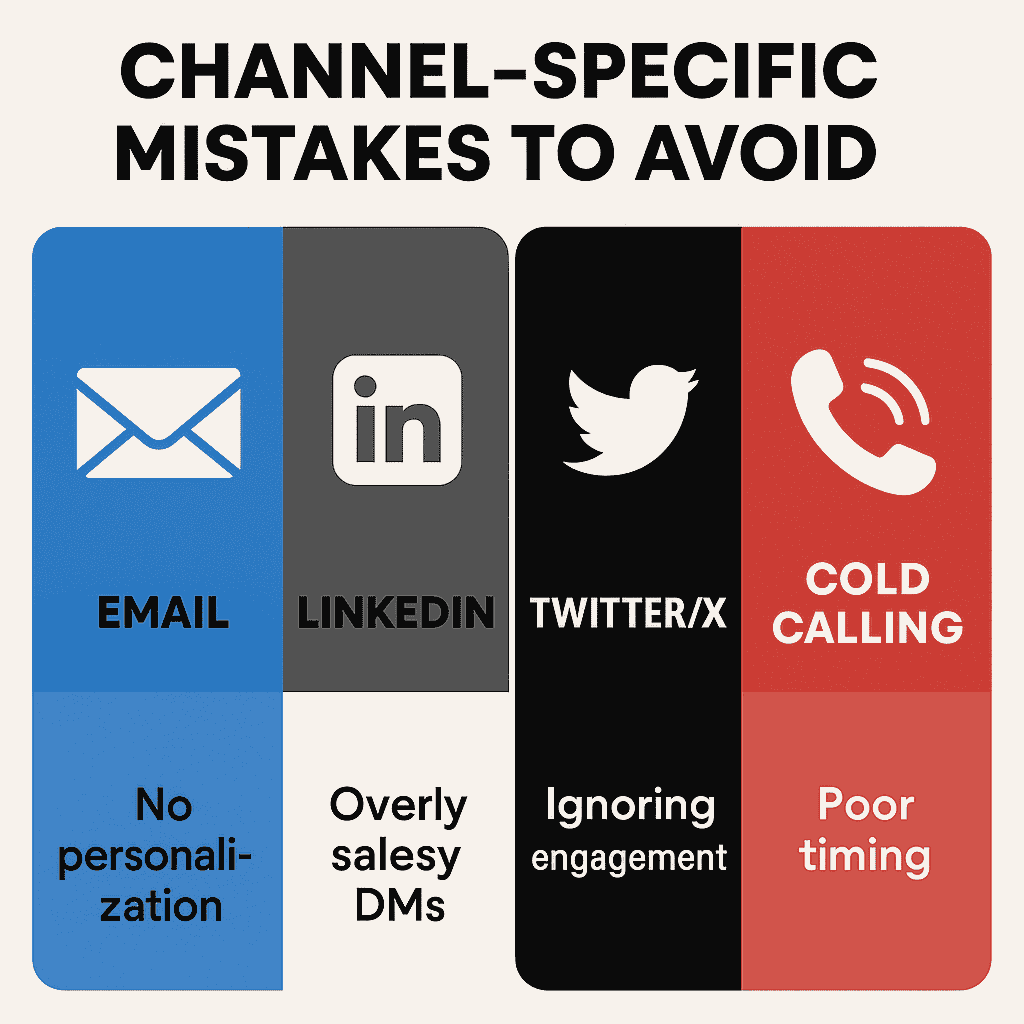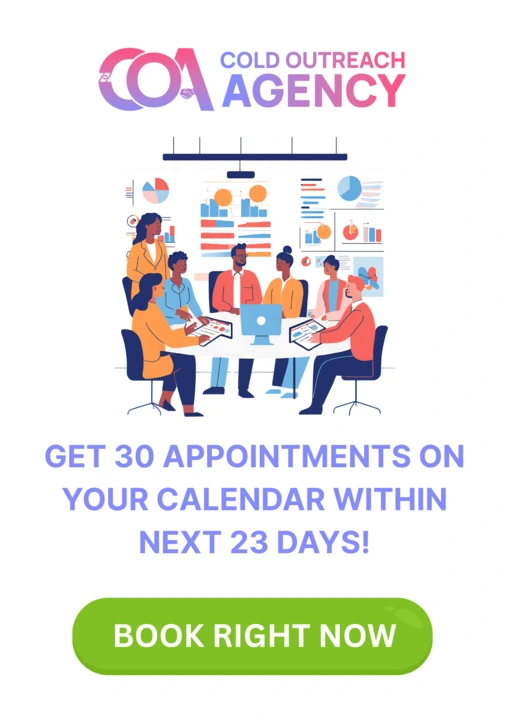Here’s the truth: neither is “better.” It all comes down to when and how you use them.
If you’re struggling to choose between cold email and LinkedIn messaging for your outbound strategy—or wondering whether you should even separate the two at all—this article will break it down clearly. No fluff. Just real experience and practical insights.
Why This Matters
If you’re running cold outreach, especially in the B2B space, your communication channel is as important as your message. Send a LinkedIn pitch to someone who never checks their inbox, and you’re invisible. Email a founder who lives on LinkedIn, and you might as well be shouting into the void.
Choosing the wrong channel not only wastes time, it ruins first impressions. And in outbound, you rarely get a second shot.
Let’s start by understanding the fundamental nature of each platform.
1. Cold Email Outreach
Cold email is your private, professional weapon. It’s direct, less noisy, and gives you full control over your sending volume, automation, personalization, and follow-ups.
Pros:
- You control the infrastructure.
- High scalability (thousands of emails/day with warm domains).
- Easy to A/B test subject lines, CTA, etc.
- Not restricted by platform rules.
- Easier to send long-form, value-packed messages.
Cons:
- Spam filters can hurt deliverability.
- Needs proper setup: DNS, warm-up, inbox rotation, etc.
- Requires a better copy to get attention.
- Replies are slower than LinkedIn at times.
2. LinkedIn Messaging
Pros:
- Warmer channel—your face, profile, and credibility are visible.
Cons:
- Limited daily invites (especially after LinkedIn cracked down).
- Can’t scale as easily without automation.
- Platform-dependent (can’t control algorithm changes).
- Risk of account restrictions if you’re too aggressive.
When to Use Cold Email

I use cold email when:
1. I Need to Reach a Large Volume of Prospects Fast
This is ideal when I’ve built out ICPs and buyer personas and want to hit multiple job titles across verticals.
2. I’m Targeting the C-Suite
Many founders and executives don’t hang out on LinkedIn as often as you’d expect. But they check their email.
3. I Want to Include Attachments
Emails offer more real estate. I can link to a personalized Loom video, attach a case study PDF, or embed a Calendly link naturally. LinkedIn messages often truncate links and make such assets look spammy.
When to Use LinkedIn Messaging
I go for LinkedIn when:
1. The Industry Is Active on LinkedIn (Agencies, Coaches, SaaS, etc.)
If my target market is active on LinkedIn—say marketing agency founders, startup CEOs, recruiters—it makes sense to meet them where they’re already networking.
2. I Need Contextual Warmth and Trust
Unlike emails, LinkedIn gives you a face, a name, a headline, and mutual connections. I’ve found that just having a solid LinkedIn profile can improve my message response rate by 2–3x. People trust real humans more than faceless emails.
So if I’m breaking into a new niche or warming up cold leads from a scraped list, LinkedIn gives me a softer entry point.
3. I’m Nurturing and Not Selling Hard
Sometimes, outreach isn’t about instant demos. It’s about nurturing. I use LinkedIn for soft touches—commenting on posts, reacting to content, and building familiarity. Then I slide into their inbox with something like:
“Hey Ankit, saw your post on scaling cold email campaigns—liked your take on personalization. I help agencies like yours with data scraping and reply tracking—curious if that’s something you’re focusing on right now?”
This approach feels organic and often gets better responses than a hard CTA.
My Hybrid Approach (The Real Sweet Spot)
Now here’s where the magic happens.
I rarely choose one channel only. I blend cold email and LinkedIn for maximum results. Here’s my typical 6-touch multichannel sequence:
Day 1: Cold email
Day 2: LinkedIn profile view
Day 3: LinkedIn connection request (no pitch)
Day 5: LinkedIn follow-up message (soft touch)
Day 6: Cold email follow-up with value snippet
Day 8+: Content comment + final LinkedIn message or email CTA
This approach does a few things:
- Increases brand recall (they’ve seen me across channels).
- Builds trust (they check my LinkedIn before replying).
- Boosts reply rate (especially for leads who ignore email but respond to DMs).
If a prospect accepts my LinkedIn request, I follow up there. If they don’t, I will continue with email. The logic is simple: I go where they respond.
How to Personalize for Each Channel
Personalization is key. But the way I personalize on email vs. LinkedIn differs slightly.
For Cold Email:
- Use ultra-targeted first lines (“Saw your recent interview on X…”)
- Reference case studies or competitors (“We helped [similar brand] increase demos by 34%”)
- Keep CTAs clear but low-friction (“Open to seeing how we can help you get more leads like [competitor]?”)
Email structure I follow:
- Subject Line: Short & curiosity-based
- First Line: Hyper-personal
- Value Prop: Sharp and relevant
- Social Proof: Real results
- CTA: One clear ask (usually for a call)
For LinkedIn:
- Mention mutual connections or common groups
- Engage with their content before messaging
- Use shorter, more conversational language
- Ask questions that invite dialogue (not just “book a call”)
Message format I use:
“Hey [Name], noticed we’re both in [Group] and saw you recently shared something on [Topic]—really resonated. I help [ICP] with [pain point]. Curious if [specific result] is something you’re working on this quarter?”
I avoid hard-selling here. People hate sales-y DMs. Focus on relevance, not pressure.
Channel-Specific Mistakes to Avoid

Let’s be real—each channel has landmines. I’ve stepped on a few. Here’s what not to do.
Cold Email Mistakes:
- Sending generic templates (delete-worthy)
- Using spammy subject lines (“Quick Question…” with no substance)
- Asking for 15–30 mins upfront (you haven’t earned it yet)
- Not warming up domains (results in zero deliverability)
LinkedIn Messaging Mistakes:
- Pitching in the connection request (instant rejection)
- Copy-pasting long messages (feels robotic)
- Ignoring profile optimization (your profile is your landing page)
- Connecting without context (feels intrusive)
Let’s be honest: if you’ve ever run cold outreach campaigns before, you already know this isn’t about throwing spaghetti at the wall and seeing what sticks. This is about using precision, context, and timing.
Cold Email: The King of Scale and Control
If I need to reach 1000 founders of SaaS startups across the U.S. this week, I’m not doing it through LinkedIn messaging. I’m doing it via cold email. Why? Because cold email gives me complete control over my outreach system, allows deep data enrichment, custom personalization at scale, and lets me automate, test, and iterate at lightning speed.
I can warm up new domains, set up multiple inboxes, and run 5–10 campaigns in parallel. I can A/B test subject lines, experiment with CTAs, and track open/reply rates down to the decimal.
But there’s a catch: cold email is only powerful if you set up the infrastructure correctly.
No SPF/DKIM/DMARC? You’re in spam.
No warm-up? You’re in spam.
Scraping trashy data? You’re in spam.
Sending generic messages that look like a mass promo? Ignored.
So cold email works—but only if you invest in the right systems: custom domains, clean sending schedules, hyper-relevant targeting, and deep personalization. That’s how I’ve booked meetings with CMOs, agency owners, and enterprise buyers using just an email and a solid hook.
Cold email is surgical. It’s the platform you use when you want to test multiple offers, get to decision-makers fast, and reach people outside your direct network. It works beautifully for B2B services, SaaS demos, recruiting, and partner outreach—especially when you’re starting from scratch and don’t yet have a big personal brand on LinkedIn.
LinkedIn Messaging: The Platform for Authority and Relationship Building
On the flip side, LinkedIn outreach is like a live networking event that never sleeps. That’s a huge advantage over a faceless cold email.
But here’s the kicker: LinkedIn is not a cold email alternative. It’s a warm-up machine.
When I reach out to someone on LinkedIn, it’s rarely with a direct pitch upfront. I like to start conversations, not pitch decks. I drop a comment on their post, send a connection request with a subtle hook, and follow up with value—maybe an idea, a resource, or just a “saw your company is scaling—curious if you’re exploring X yet.”
The response rate is usually lower in volume but higher in engagement. And when they finally do reply, they’re 5x more likely to be open to a call because they’ve seen me before. I’ve used LinkedIn to warm up leads that were totally cold on email—and by the time I dropped my offer, they were halfway sold.
But again, it has limits.
LinkedIn has daily limits.
It’s harder to automate at scale.
People ignore generic connection requests.
And if your profile isn’t optimized, your outreach will fall flat.
So if cold email is a scalpel, LinkedIn is a handshake. It’s about nurturing. Positioning. Building brand equity. I never use it just to pitch. I use it to become known.
The Real Game-Changer: Combining Both Channels
1. Day 1: I will send a cold email to a founder
2. Day 2: I view their LinkedIn profile.
3. Day 3: I send a connection request with a soft message: “Hey [First Name], I sent over a quick idea via email yesterday—wanted to connect here too if you’re open.”
4. Day 6: I engage with one of their posts.
5. Day 7: If they still haven’t replied, I drop a follow-up on LinkedIn: “Hey [First Name], totally understand you’re busy—if scaling demo conversions isn’t a focus right now, all good. Just thought I’d share what worked for [Client X].”
This isn’t spam. This is orchestrated outreach. It’s personal, non-intrusive, and relevant across both channels.
With this multi-channel approach, I’ve seen:
3x higher reply rates
50% increase in meeting bookings
Warmer conversations on the first call (because they recognize me)
The combo of cold email + LinkedIn = unstoppable. One builds the bridge, the other makes the handshake. And that synergy is where most agency owners and freelancers fall short—they either spam on email or go full networking mode on LinkedIn with zero pitch. You need both.
My Golden Framework for Choosing the Right Channel
If you’re still wondering when to use what, here’s the simple mental framework I use:
Ask Yourself Choose This
Need scale and speed? Cold Email
Have warm leads or shared connections? LinkedIn
Selling to executives at big companies? Cold Email (then LinkedIn)
Targeting creatives, consultants, solopreneurs? LinkedIn first
Want to test 5 angles in 1 week? Cold Email
Want to build relationships over time? LinkedIn
Running a multi-touch sequence? Both
In my agency, we’ve built campaigns that use LinkedIn to warm up cold email leads, cold emails to follow up with LinkedIn connections, and LinkedIn voice notes to re-engage ghosted leads from email. The results? More replies, higher conversions, better clients.
What separates the ignored from the replied-to isn’t just the channel—it’s the quality of your outreach.
Know your audience.
Craft a sharp hook.
Lead with value.
Respect their time.
And build a process that treats cold email and LinkedIn not as separate lanes—but as one connected customer journey.
This mindset has changed how I approach outreach forever. And if you’re serious about generating qualified leads and building real relationships at scale, it’ll change things for you too.
Cold email vs. LinkedIn? Use both. But use them intentionally.
That’s how you win.
“What’s the best channel for this specific person, at this specific stage of awareness, in this specific market?”
Sometimes it’s email. Sometimes it’s LinkedIn. Often, it’s both.
My suggestion? Test both. Let the data talk. Watch your open rates, reply rates, and conversion rates by channel. Then optimize accordingly.
Don’t marry one platform. Marry the strategy.
Frequently Asked Question
Q: Can I use automation for both channels?
Yes—but be careful. Tools like Instantly or Smartlead work great for email. For LinkedIn, tools like Expandi or Salesflow are solid, but overuse can get your account flagged. Keep it human.
Q: What’s a good LinkedIn connection request message?
Simple is best:
Email has more room for multiple follow-ups. On LinkedIn, follow up 1–2 times max, or you’ll seem spammy.
Q: How many cold emails should I send per day?
Start with 20–50 per day per inbox. Warm up slowly, scale later with multiple domains.
Q: How do I handle people who say “Not interested”?
Always thank them and remove them from sequences. You never know—they might come back later.
This multichannel game isn’t about hacks—it’s about relevance, timing, and consistency. If you’ve got those down, cold email and LinkedIn aren’t rivals—they’re partners. And together, they’ll take your outbound results to the next level.

